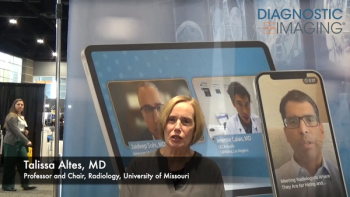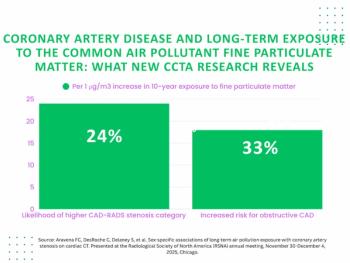
New Guidelines Released for Training Radiology Students in Cardiovascular CT
New case volume-based training curriculum is designed to create a standardized competency level for radiologists-in-training.
Training for radiologists interested in cardiothoracic imaging received an upgrade from the Society of Cardiovascular Computed Tomography (SCCT) on Friday.
In a guidance document that targets program directors responsible for creating curricula to train both independent and advanced practitioners, the SCCT outlined a novel pathway for standard, uniform competence level for both cardiologists- and radiologist-in-training.
The new guideline was published in the
In 14 pages, the SCCT laid out new curriculum milestones and thresholds that will enable those providers to reach an overall competency in coronary imaging, structural heart disease, and congenital heart disease.
For more coverage based on industry expert insights and research, subscribe to the Diagnostic Imaging e-Newsletter
In creating this guidance, the SCCT focused on the six core competencies that have been highlighted by the U.S. Accreditation Council for Graduate Medical Education, including medical knowledge, practice-based learning and improvement, patient care and procedural skills, systems-based practice, interpersonal and communication skills, and professionalism.
In order for these providers to reach a higher level of competency, this type of over-arching program is necessary, said Andrew Choi, M.D., FSCCT, co-chair and lead author of the guideline.
“The rapid growth and established benefit of the CCT approach in multiple clinical domains require programs to adopt a comprehensive training curriculum to meet the growing need for well-trained independent and advanced practitioners in both cardiology and radiology,” he said. “This guideline allows cardiovascular medicine to expand high quality CCT in the United States and around the world.”
Currently, a knowledge gap exists among these independent and advanced practice providers because training programs, local volumes, and supervisor expertise differ widely. Consequently, this curriculum that is based on case volume will serve as a minimum floor to assess competency, but there will be a need for additional training updates in the future. Those will likely be issued via traditional and emerging digital publication formats.
“As the tremendous proven value that this modality provides to our patients is more and more recognized…it is more important than ever before to define and standardize the training requirements for users, basic and advanced practitioners of cardiac CT, independent of whether they are radiologists or cardiologists,” said former SCCT president Suhny Abbara, M.D., FACR, MSCCT, chief of cardiothoracic imaging and director of the cardiothoracic imaging fellowship program at the University of Texas Southwestern Medical Center. “This is exactly what this guidance addresses.”
It is important to note, the SCCT representatives said, that this updated training curriculum is intended to be a supplement to – not a replacement for – current statements from the American College of Radiology, American College of Cardiology COCATS 4, and other global training documents.
Newsletter
Stay at the forefront of radiology with the Diagnostic Imaging newsletter, delivering the latest news, clinical insights, and imaging advancements for today’s radiologists.




























